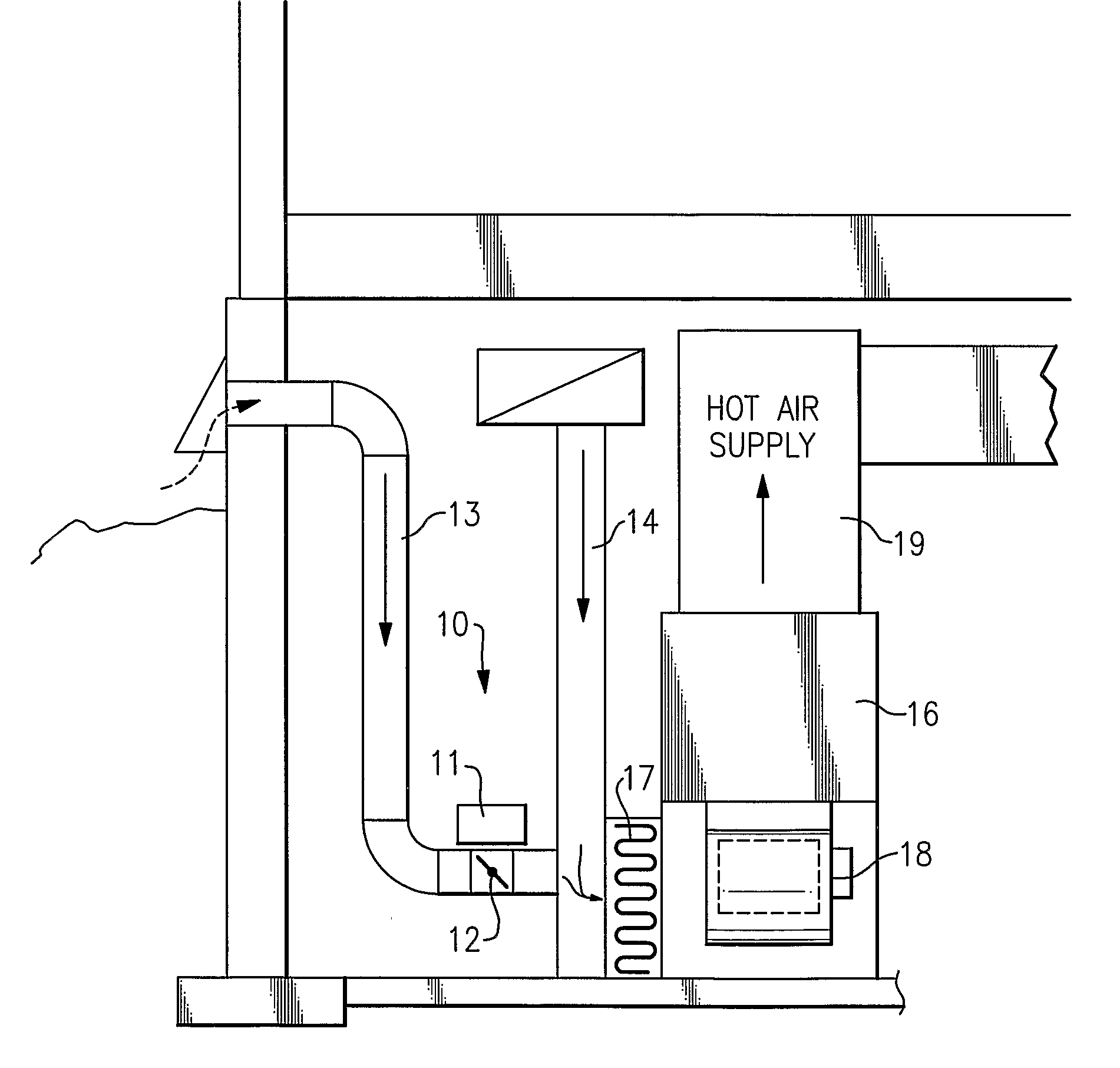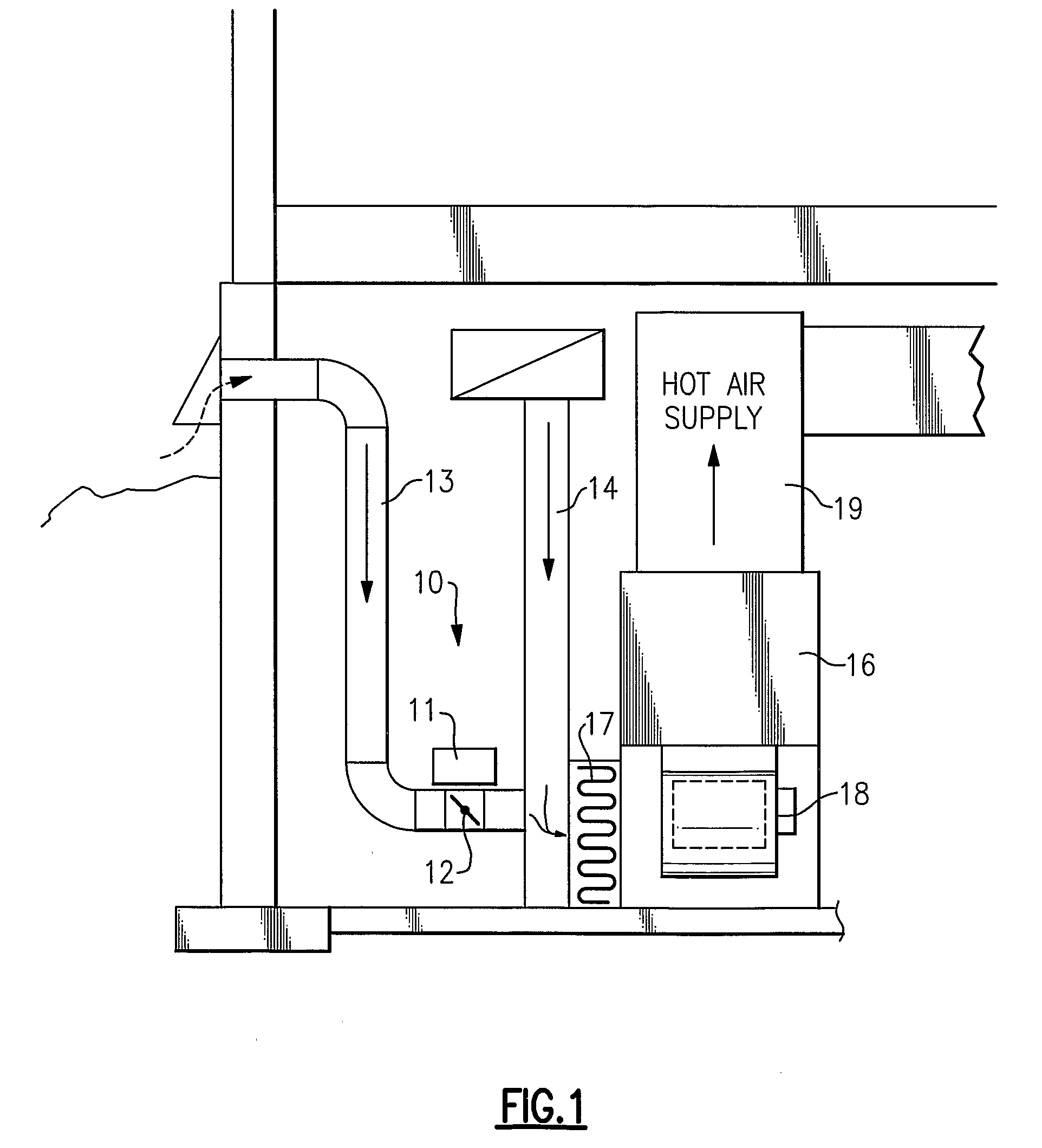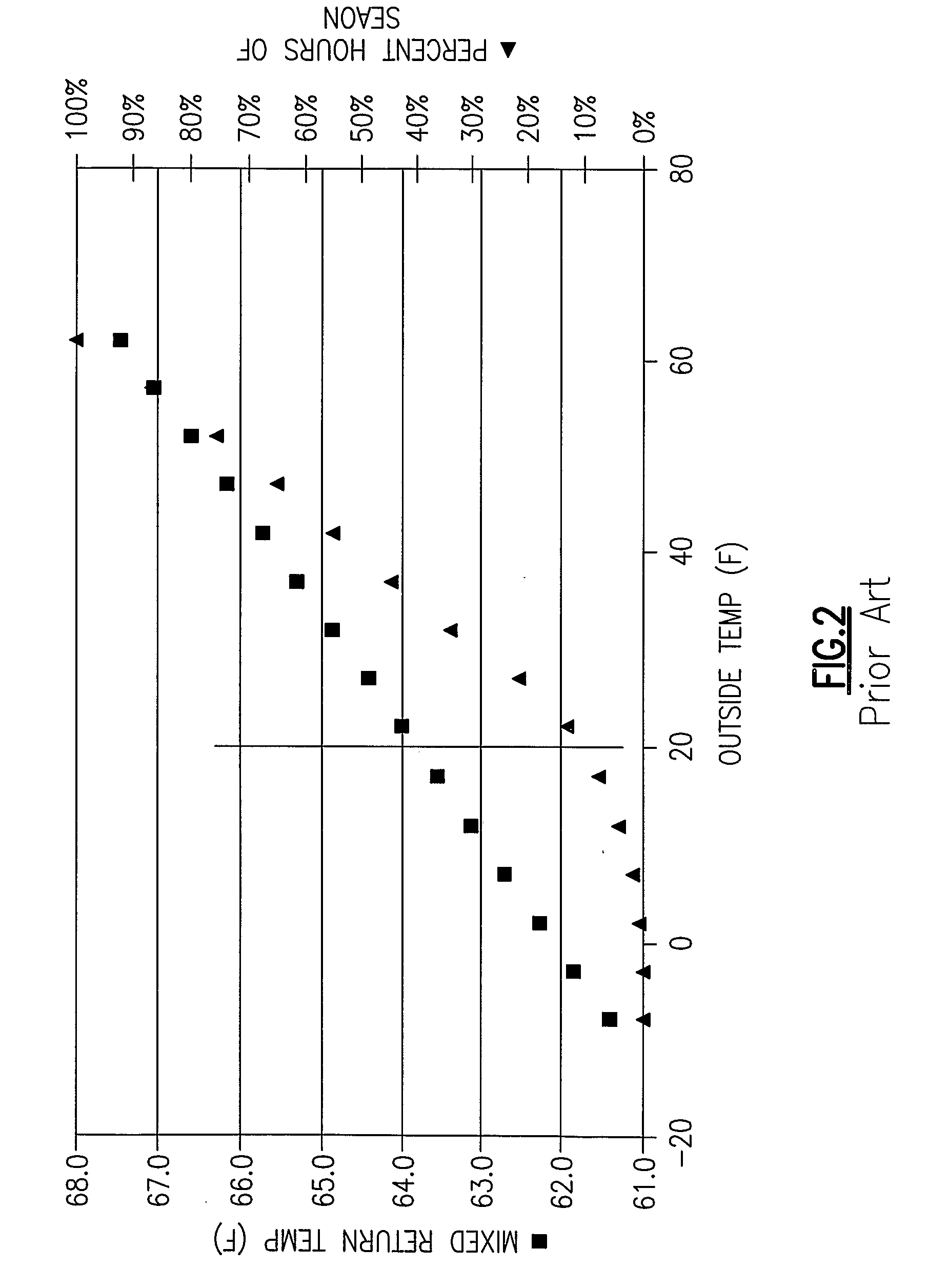Energy Efficient House Ventilation
a house ventilation and energy saving technology, applied in the field of comfort systems for houses, can solve the problems of corrosion failure, ventilation of most homes, and comfort problems, and achieve the effect of reducing the degree of mechanical ventilation
- Summary
- Abstract
- Description
- Claims
- Application Information
AI Technical Summary
Benefits of technology
Problems solved by technology
Method used
Image
Examples
Embodiment Construction
[0023]Referring now to FIG. 1, the invention is shown generally at 10 as applied to a damper control 11 which is operative to control the position of a damper 12 in a manner to be described more fully hereinafter.
[0024]The damper 12 is disposed within an outside air duct 13 for regulating the amount of outside air that passes through the outside air duct 13 to a return air duct 14. The return air duct 14 is installed in such a manner that it conducts the flow of relatively cool air from the space being heated back to a furnace 16 by way of an air filter 17. A blower 18 in the furnace 16 acts to draw into the furnace the return air from the return air duct 14, as well as outside air through the outside air duct 13 when the damper 12 is open. The air mixture is then heated by the furnace 16 and delivered to the spaced to be heated by way of the hot air duct 19.
[0025]It should be mentioned that the purpose of introducing the outside air into the system is to ensure that the quality of ...
PUM
 Login to View More
Login to View More Abstract
Description
Claims
Application Information
 Login to View More
Login to View More - R&D
- Intellectual Property
- Life Sciences
- Materials
- Tech Scout
- Unparalleled Data Quality
- Higher Quality Content
- 60% Fewer Hallucinations
Browse by: Latest US Patents, China's latest patents, Technical Efficacy Thesaurus, Application Domain, Technology Topic, Popular Technical Reports.
© 2025 PatSnap. All rights reserved.Legal|Privacy policy|Modern Slavery Act Transparency Statement|Sitemap|About US| Contact US: help@patsnap.com



